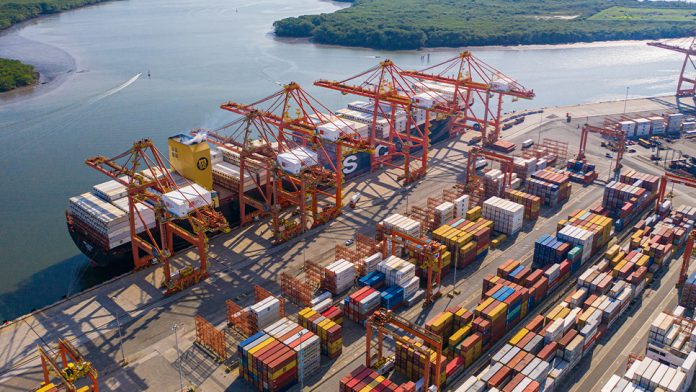Ocean freight container carriers are treading a fine line between risk and reward during new contract negotiations as the market remains gripped by uncertainty in the Red Sea, according to new data on the Xeneta Shipping Index (XSI®).
The latest data released by Xeneta shows the Global XSI® (the average rate of all valid long-term contracts in the market) remained fairly flat in April at 154.3 points, up by just 1.7% from March.
However, looking at sub-indices within this global figure reveals a dynamic market, with the XSI® for European Imports reaching 171.8 points, which is up by 9.2% from March and its biggest month-on-month increase since June 2022.
However, the XSI® sub-indices for US Imports fell by 9.4% in April to 150.6 points. And, while April’s Global XSI® figure represents a slight month-on-month uptick, it is still down by 50.1% compared to April 2023.
“We have seen a big increase on the XSI® for European Imports in April, mainly due to the ongoing impact of conflict in the Red Sea,” stated Emily Stausbøll, Xeneta Senior Shipping Analyst.
“However, given the spot market on trades such as Far East to Mediterranean is still up by more than 60% compared to 12 months ago, you would expect carriers to be pushing for even higher long-term rates.
“The reason carriers aren’t demanding higher long-term rates is because they are scared of overcapacity in an uncertain market.”
The case for higher long-term rates is strengthened by a 10.7% increase in global container volumes in January and February compared to the first two months of 2023.
Even the European Imports XSI® sub-index, which registered strong month-on-month growth in April, is down by 34.2% compared to a year ago.
Stausbøll added: “There has been record high deliveries of new container ships in every quarter since Q2 2023, but conflict in the Red Sea has largely protected carriers from overcapacity so far in 2024 because diversions around the Cape of Good Hope require more ships to maintain service schedules.
“If the situation changes and we see a large-scale return of container ships to the Red Sea in the next 12 months, it will leave carriers severely exposed to the impact of overcapacity and spot market rates are likely to plummet.
“Yes, carriers want higher long-term rates, but they also need to secure long-term volumes. That is the fine line they are trying to walk, balancing risk and reward in such an unpredictable market.
“Carriers and shippers must wish they had a crystal ball to know how the next 12 months will play out, but they don’t, and this uncertainty illustrates how every single negotiation is unique.”
The XSI® sub-indices for US Imports score of 150.6 points not only represents a 9.4% month-on-month decrease, it is also down by an enormous 67% compared to April last year when it stood at 451.5 points. It is also the lowest the index has been since April 2021.
With many US shippers’ long-term contracts running from April to May, next month’s XSI® figures will reveal how recent negotiations have played out.
Stausbøll believes market data and intelligence have been central to these discussions.
She said: “Spot rates from the Far East to the US East Coast have steadily fallen by 33% from their peak at the start of February following the escalation of conflict in the Red Sea in December. Spot rates from the Far East into the US West Coast have fallen by 31% in the same period.
“US shippers have used Xeneta data during long-term contract negotiations to highlight this softening spot market and secured substantial big discounts between tender rounds. These new long-term contracts will come into validity in May so we can expect to see further movement on the XSI® in the next month.”
This article was written by Emily Stausbøll, Xeneta’s Senior Shipping Analyst







